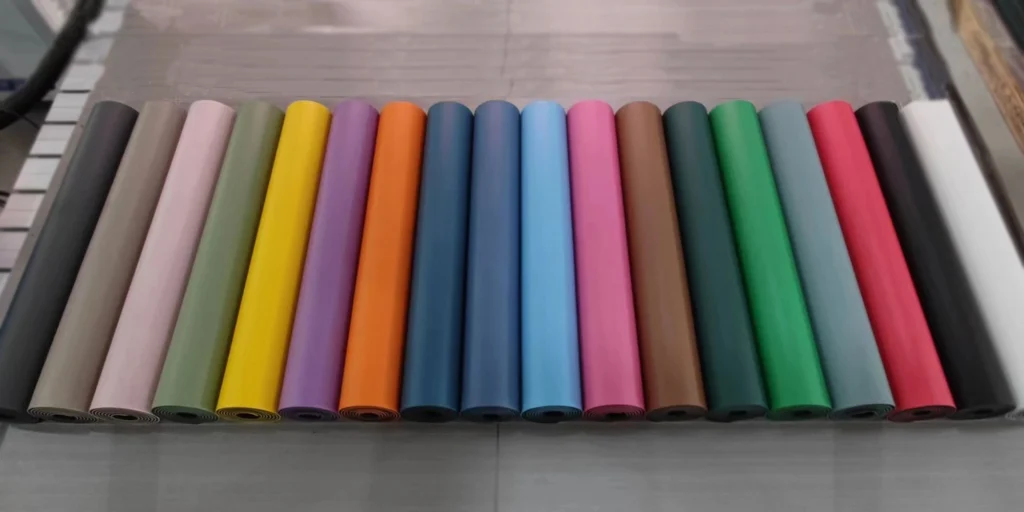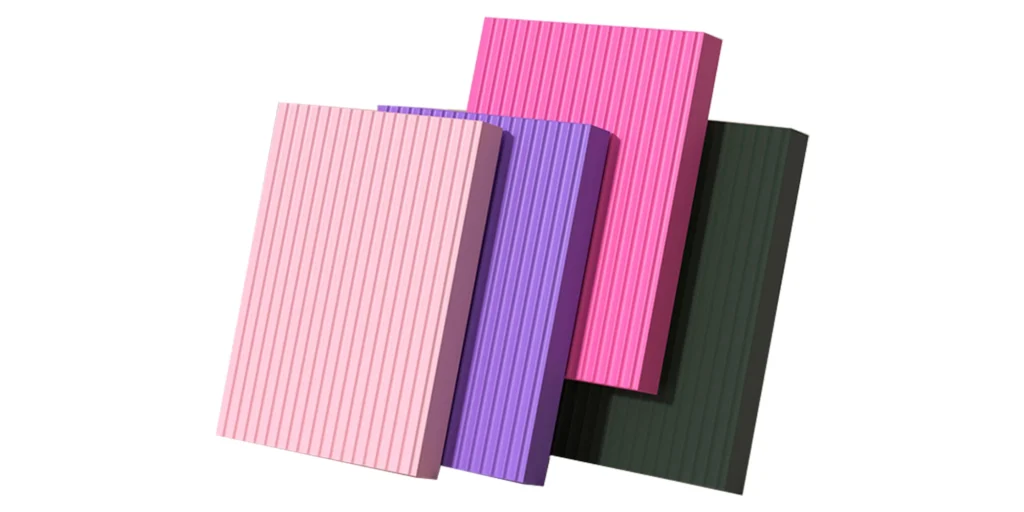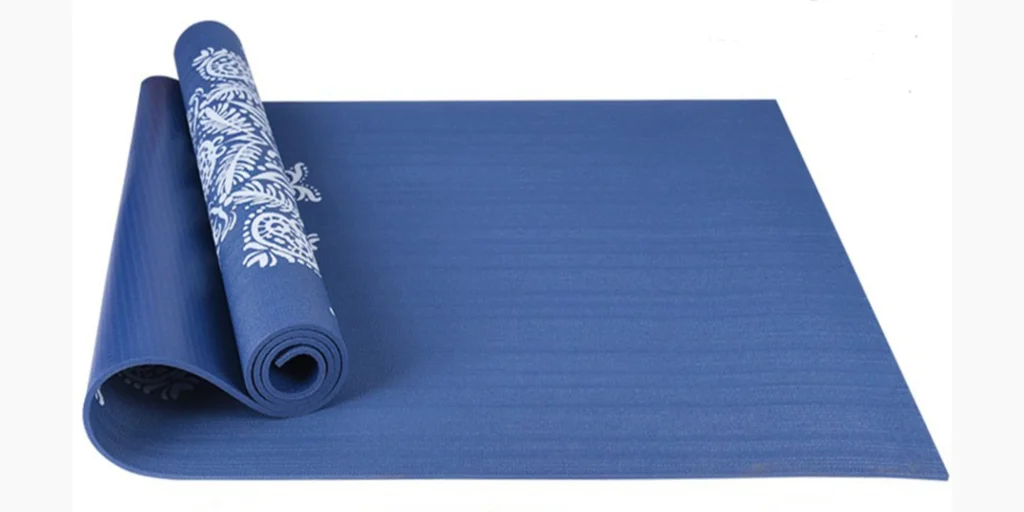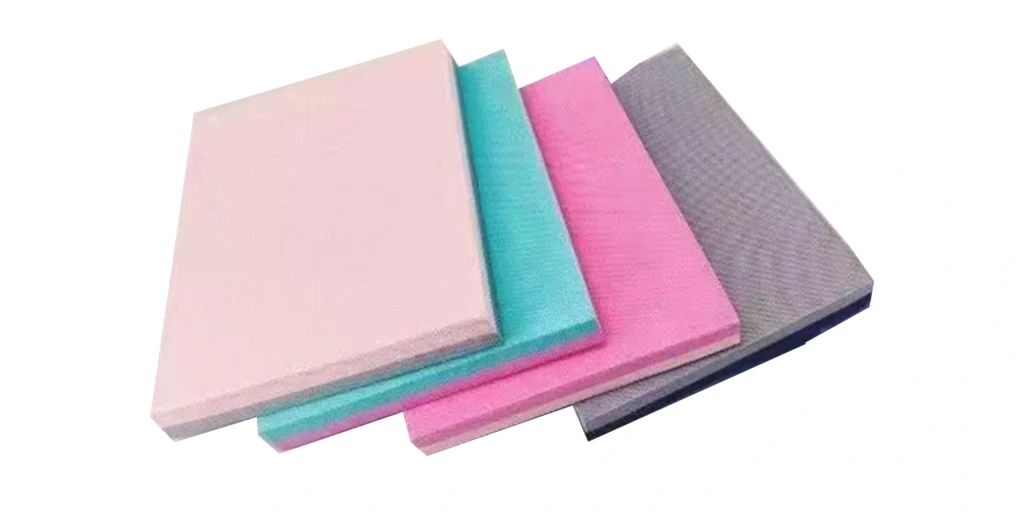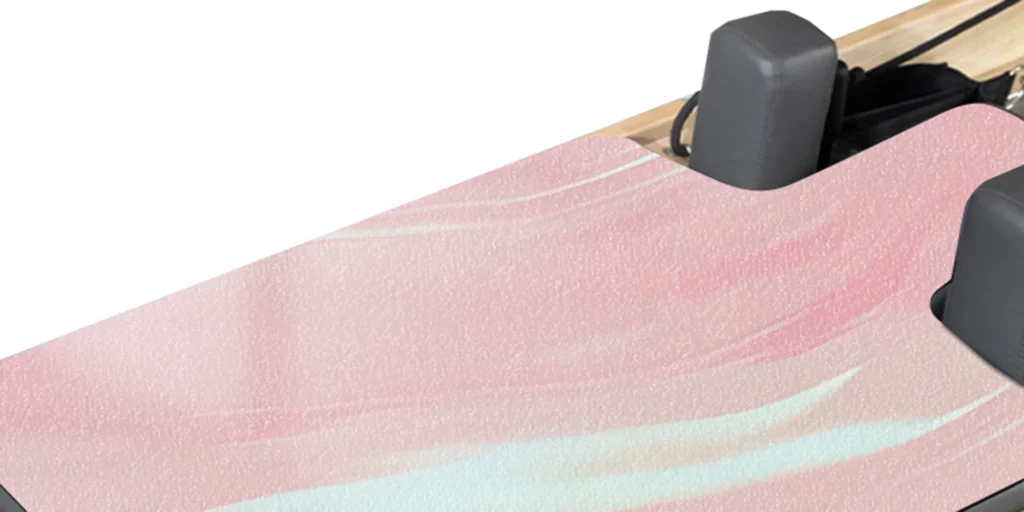In today’s competitive wholesale market, businesses must always seek cost-effective, durable, and efficient materials to remain profitable while ensuring product quality. Thermoplastic Elastomer (TPE) foam mats are rapidly gaining popularity for a variety of applications, from fitness and sports to industrial uses, due to their remarkable balance of performance and price. This article will explore the cost-effectiveness of sourcing TPE foam mats for large-scale production, highlighting key pricing trends, material efficiency, and durability factors.
What is TPE Foam?
TPE foam, a material combining the benefits of rubber and plastic, offers significant advantages over traditional foam products. It is an environmentally friendly, flexible, and lightweight material, making it a popular choice for manufacturers looking to offer high-quality products at competitive prices. TPE foam mats are primarily used in areas like gyms, yoga studios, sports complexes, and even in construction applications for insulation or cushioning.
Why TPE Foam Mats Are a Cost-Effective Choice for Wholesale Markets
When sourcing materials for large-scale production, companies need to consider several factors that directly influence both cost and quality. TPE foam mats stand out in the following key areas:
1. Competitive Pricing and Market Trends
The cost of raw materials, manufacturing processes, and international shipping can significantly affect the overall price of foam products. However, TPE foam mats offer a cost-effective solution, primarily because of their lower production costs compared to alternative materials like PVC or rubber mats. The primary reasons for this include:
- Lower Raw Material Costs: TPE is an affordable raw material compared to other rubber-based or petroleum-derived foams, making it more cost-efficient for manufacturers to produce in bulk.
- Stable Pricing Trends: While the prices of raw materials like petroleum and rubber can fluctuate, TPE foam remains relatively stable in cost due to its versatility and the abundance of TPE suppliers globally. This pricing stability helps businesses forecast costs more accurately and avoid sudden price hikes.
- Economies of Scale: As demand for TPE foam mats increases, manufacturers can take advantage of economies of scale, reducing per-unit costs for large-scale orders. Wholesale buyers who source in bulk can achieve better pricing by working directly with suppliers who offer bulk discounts.
2. Durability and Longevity
Durability is one of the primary factors driving the cost-effectiveness of TPE foam mats. These mats offer superior resistance to wear and tear compared to other materials, meaning they last longer without needing frequent replacements. Some key durability advantages include:
- High Impact Resistance: TPE foam mats are resistant to compression, ensuring that they retain their shape and cushioning properties even under heavy use. This is particularly important for industries like fitness or sports, where mats are subjected to constant pressure and movement.
- Weather and Chemical Resistance: TPE is naturally resistant to water, oils, and chemicals, making it suitable for a range of environments, from gyms to construction sites. It also has excellent UV stability, which prevents degradation when exposed to sunlight.
- Non-toxic and Safe: Unlike PVC, which can release harmful chemicals during use, TPE foam mats are non-toxic and safe for users. This adds long-term value for businesses, especially when selling to health-conscious consumers or markets with strict environmental regulations.
The durability of TPE foam mats reduces the frequency and cost of replacements, providing an ongoing return on investment for businesses. When you source high-quality TPE foam mats, you’re ensuring that your customers get products that last, which in turn, reduces the need for frequent replacements or returns.
3. Material Efficiency and Versatility
Another aspect of TPE foam mats’ cost-effectiveness is their material efficiency. The manufacturing process for TPE foam is more streamlined compared to traditional foam materials. The key factors contributing to this efficiency include:
- Low Waste Production: TPE foam can be recycled and repurposed, reducing material waste during production. Manufacturers can reuse scraps and offcuts, which further lowers costs.
- Customization Options: TPE foam mats can be easily customized in terms of size, color, thickness, and texture. This level of customization means businesses can tailor their products to meet specific market demands without the need for additional production steps or expensive modifications.
- Reduced Shipping Costs: TPE foam mats are lightweight, reducing shipping expenses. This is a crucial factor when importing or distributing mats globally, as lower shipping costs translate directly to improved profit margins.
By sourcing TPE foam mats that are efficient to produce, businesses can further reduce costs while offering a diverse range of products that appeal to different consumer needs.
4. Environmental Benefits and Consumer Demand
In the era of sustainability, businesses must consider the environmental impact of the materials they use. TPE foam mats are an eco-friendly alternative to traditional foams like PVC, which can release harmful toxins into the environment. TPE foam is:
- Non-toxic and Free of Harmful Chemicals: TPE foam does not contain phthalates or other toxic substances, which is especially important for markets with stringent environmental or health regulations, like the European Union or the United States.
- Recyclable: Many TPE foam products are fully recyclable, adding an eco-friendly component to the supply chain that can be leveraged in marketing strategies.
- Consumer Preference: As more consumers become aware of the environmental impact of their purchases, products made from sustainable materials like TPE foam are becoming increasingly popular. Businesses that offer TPE foam mats can cater to this growing consumer demand for eco-friendly alternatives, which can justify higher price points and increase consumer loyalty.
5. Lower Maintenance Costs
Because of their durability and resistance to wear, TPE foam mats require less maintenance compared to other foam products. This leads to lower ongoing costs for both businesses and end-users. For wholesale markets, this means fewer customer complaints, returns, and replacements, which in turn reduces costs related to after-sales service and warranty claims.
How to Source High-Quality TPE Foam Mats for Wholesale
To maximize the cost-effectiveness of sourcing TPE foam mats, it’s essential to partner with reliable suppliers who can consistently deliver high-quality products. Here are a few tips for sourcing TPE foam mats:
- Research Suppliers: Look for suppliers with a proven track record of producing high-quality TPE foam mats. Check their certifications, production capabilities, and customer reviews to ensure they meet your standards.
- Negotiate Bulk Pricing: Establish long-term relationships with suppliers and negotiate bulk discounts. Many suppliers offer favorable pricing for businesses that commit to larger orders.
- Order Samples: Before placing large orders, request samples of the TPE foam mats to assess their quality, durability, and suitability for your specific market needs.
- Consider Lead Times: Plan ahead for production and shipping times, especially when importing TPE foam mats from overseas suppliers. Longer lead times can impact your ability to meet customer demand in a timely manner.
The cost-effectiveness of TPE foam mats for wholesale markets is undeniable. From competitive pricing and durability to material efficiency and environmental benefits, TPE foam mats offer a superior solution for businesses looking to maintain profitability while delivering high-quality products. By understanding the key pricing trends, durability factors, and sourcing strategies, businesses can make informed decisions that optimize their operations and improve their bottom line.
FAQ: Cost-Effectiveness of TPE Foam Mats for Wholesale Markets
1. What makes TPE foam mats more cost-effective than other foam options?
TPE foam mats are more cost-effective because they offer competitive pricing, longer durability, and greater material efficiency. Compared to PVC or rubber mats, TPE requires less raw material and produces less waste, reducing manufacturing and operational costs. Additionally, their longevity and resistance to wear mean fewer replacements and maintenance costs.
2. How durable are TPE foam mats for long-term use?
TPE foam mats are highly durable, with excellent resistance to wear, chemicals, and UV damage. Their ability to retain their form under pressure and resist environmental degradation makes them ideal for high-traffic areas like gyms, sports complexes, and even outdoor settings.
3. Can TPE foam mats be customized for different applications?
Yes, TPE foam mats are highly versatile and can be customized in terms of size, color, thickness, and texture. This level of flexibility allows businesses to meet the specific needs of different markets, from fitness mats to industrial insulation, without incurring extra production costs.
4. Are TPE foam mats eco-friendly?
Yes, TPE foam mats are considered environmentally friendly. They are free from harmful chemicals like phthalates and are fully recyclable. This makes them a great option for businesses targeting eco-conscious consumers or those with stringent environmental regulations.
5. What factors should I consider when sourcing TPE foam mats for wholesale?
When sourcing TPE foam mats for wholesale, consider factors such as supplier reliability, bulk pricing options, lead times, and quality assurance. Always request samples before placing large orders to ensure the mats meet your quality standards. Partnering with reputable suppliers can help ensure consistent product delivery and competitive pricing.
#TPEFoamMats #WholesaleBusiness #CostEffectiveMaterials #EcoFriendlyFoam #DurableMats #SustainableProducts #FitnessMats #MaterialEfficiency #WholesaleSuppliers #BusinessGrowth #CostSavingStrategies #EcoConsciousBusiness #TPEFoam
WELLE Trade has over 20 years of experience in the production and processing of PE/EVA/TPE foams, so you may want to consult with them if you have any sourcing needs.
